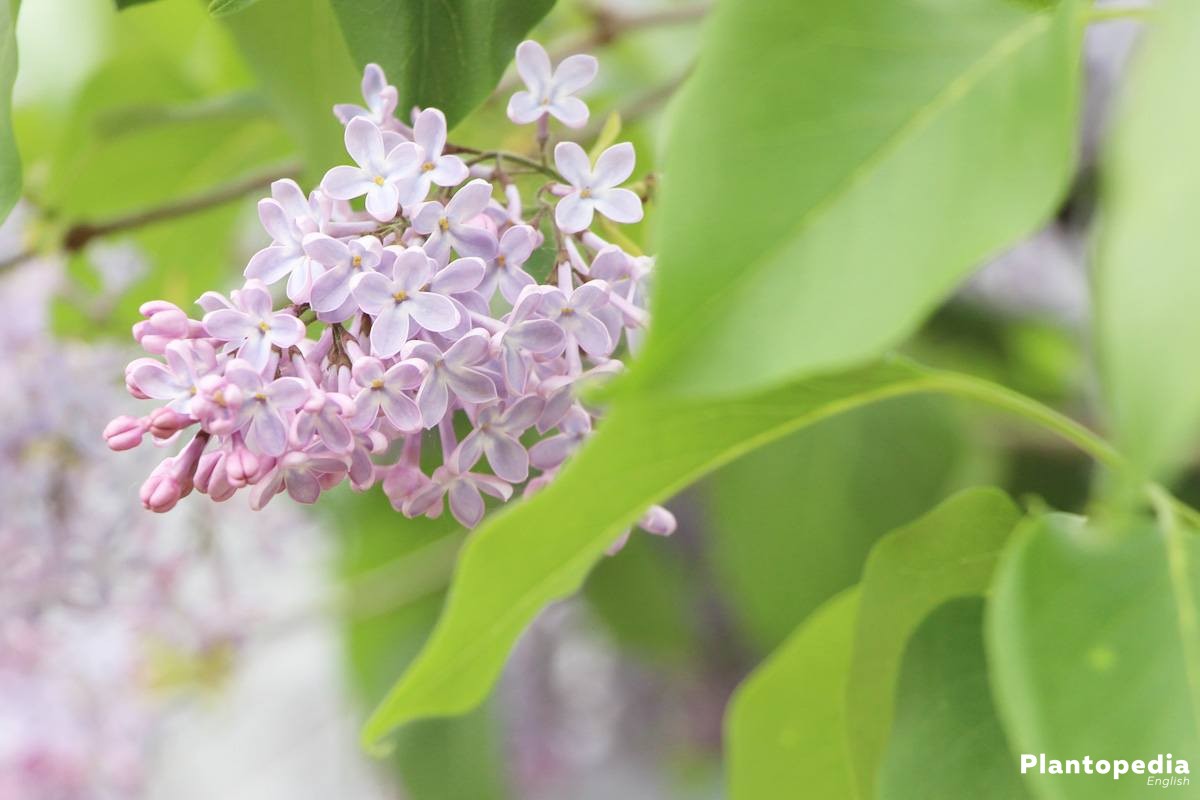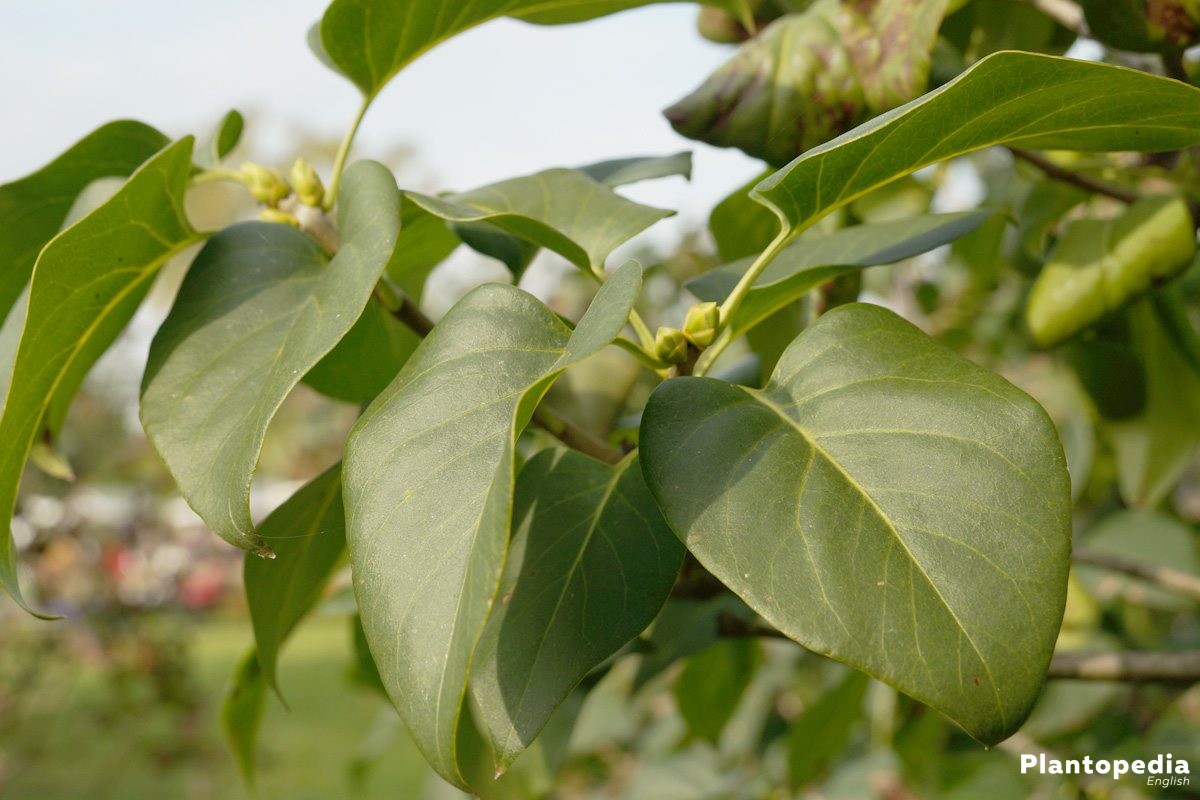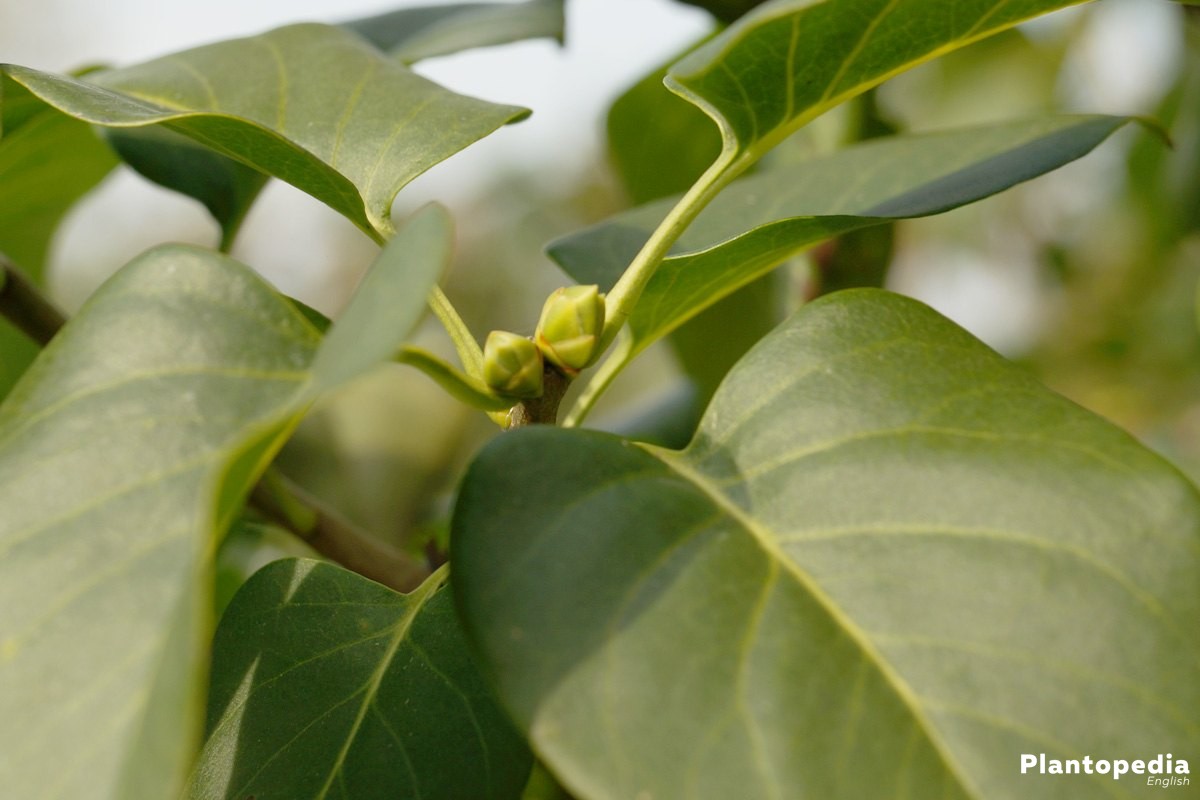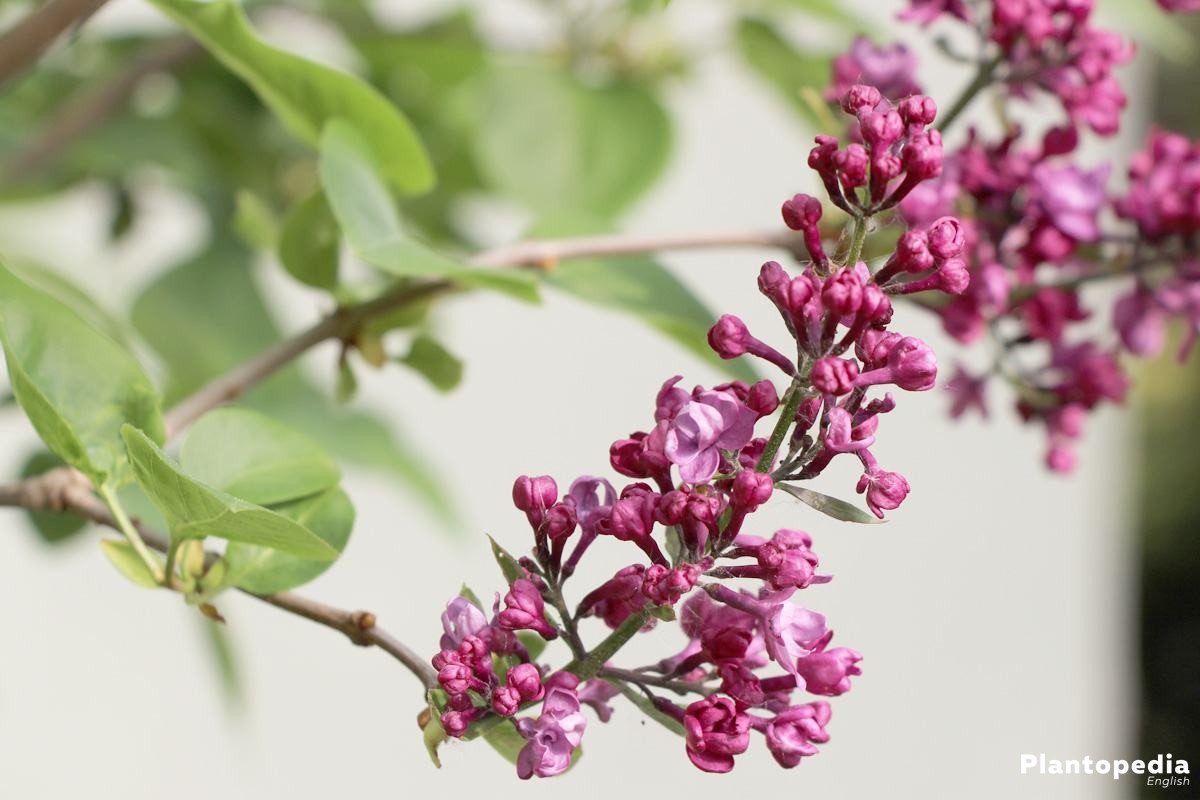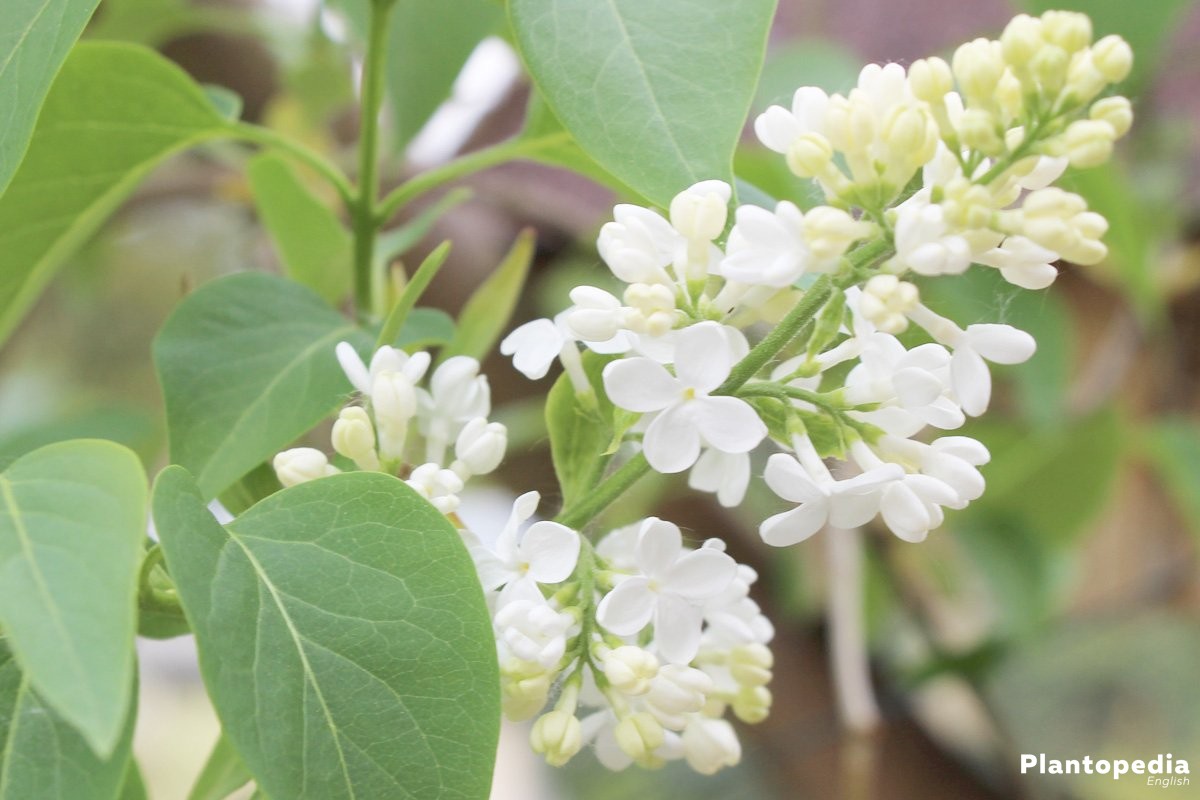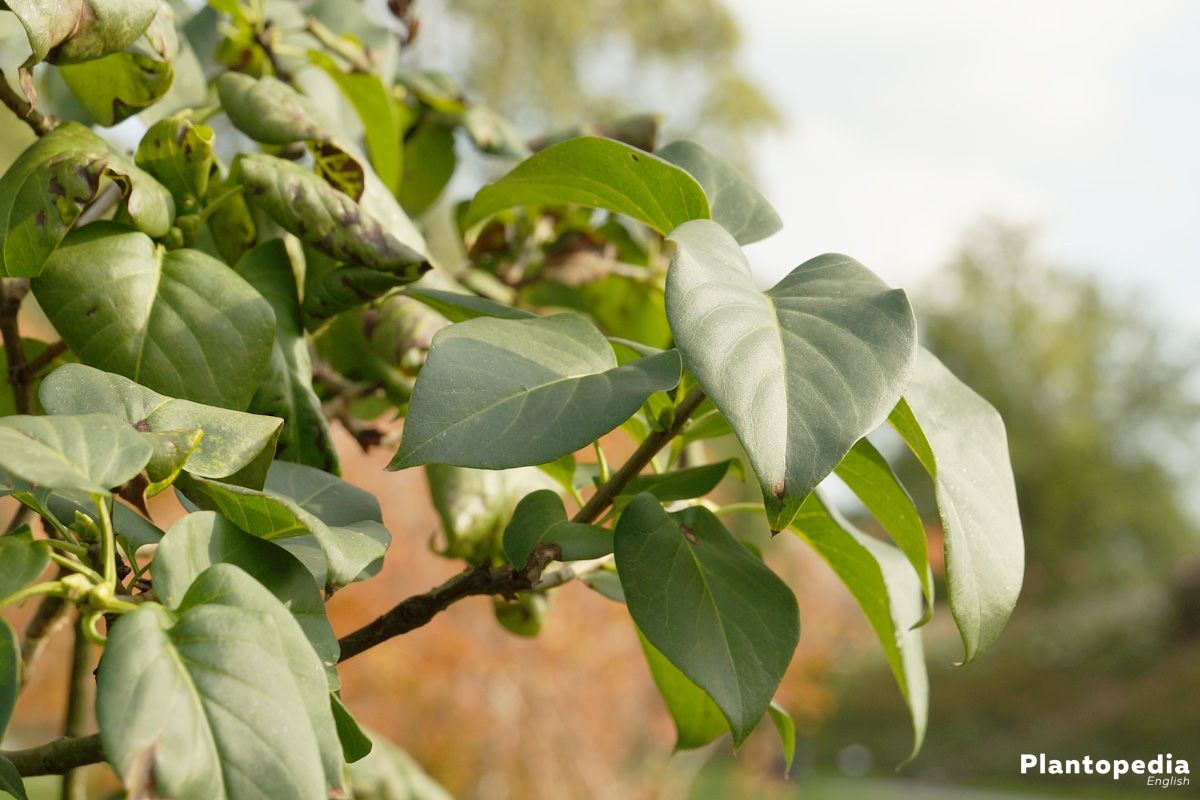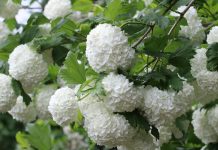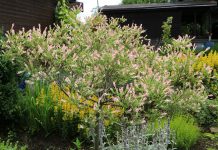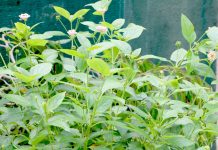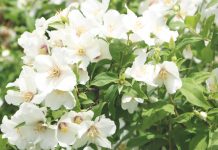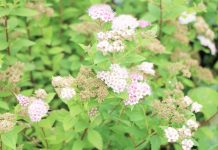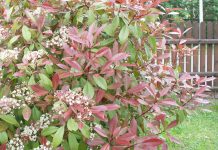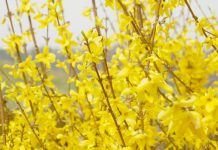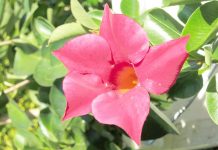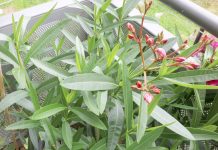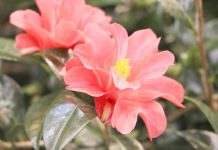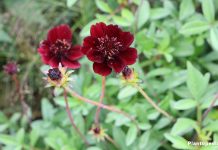The lilac (syringa) belongs to the classical garden shrubs and smaller trees, which emit the essence of spring. The tube formed blossoms, which appear on the wood in May, grow in colorful panicles and radiate an exquisite, unique scent. Without the blossoms, the visual appearance of the lilac shrub is stepping into the background. We will show you with our care instruction how to do everything right at cultivating the lilac (syringa).
Plant Profile
Contents
- Plant family: Oleacea
- Species: Lilac (Syringa)
- Trivial name: Lilac bush, lilac, lilac shrub
- Origin: Asia or Southeast Europe
- Summer green shrubs or smaller trees
- Growth height: Between 1,5 and 7 Meters
- Flowering period: May/June
- Scented, blue violet, rose colored or white blossom umbels
The lilac bush spends the whole year a rather unassuming life – until the blossoms open in May and the spectacular show for the senses is commencing. The lilac shrub can barely be beaten by another plant when it comes to enchanting scents; the looks; the appearance furthermore leaves for no desires with its mostly violet or white panicles.
While the scented shrub could not be missed in parks or farmers gardens, it has become out of fashion in the last years. Now the lilac appears to be back in fashion with new varieties and new species.
From May to June, new blooming lilac shrubs (syringa) shine everywhere in the garden. The lilac is sometimes recommended as a covering shrub for planting on embankments or as wind shelter. However diverse the usage of the scented shrubs might be, it deserves a special position in the garden, in order to emphasize its beauty.
Lilac (syringa) mostly grows as a multi stem shrub, sometimes as a small tree of up to seven meters in growth height. Whoever does not have enough space is better saved with a dwarf lilac.
Care
You are getting a very uncomplicated and low maintenance plant for your garden with the lilac shrub, which blooms ravishingly even without elaborate care. Whoever adheres to some basic rules, will enjoy the wood very much and like the sight of scented blossoms which he is confronted with every spring.
Location
Concerning the location for the lilac tree one foremost has to abide by the following: Syringa, Lilac explicitly likes the sun and does not tolerate shadow. That is why the shrub is ideally planted at an exposed position or as solitary plant or on a southern or southwest facing house wall. If the lilac does not receive a sufficient amount of light it might grow leaf mass, however blossoms only to a moderate extend.
- light requirements full sunny
- at least six sun hours per day
- great air circulation required
- tolerates city climate
Soil conditions
The syringa, lilac shows itself as an uncomplicated shrub, as it loves lime rich and nutrient rich soils, does however also thrive in weak sour garden soils. In order for the wood to unfold its full beauty, the ground should be fertile, rich in humus and well permeable to water. If a lilac tree is too moist, its growth will be insufficient.
- humus
- moderate nutrient levels
- fresh moist until moderately dry
- well permeable
- pH Value: Neutral to light in lime
- some varieties like a slightly sour substrate
Planting period
In order for the lilac shrub (syringa) to properly root before driving out in spring, the ideal planting time lies in autumn. If you have missed the planting season in autumn, you can buy a blooming container plant in spring and plant it in a garden or a bit bucket.
Planting in the bed
The lilac tolerates every ordinary potting soil, if it is rid of water. That is why it is not exactly difficult, to find a suitable spot in a sunny position with sunny conditions in the garden, which offer the perfect growth conditions for the shrub or a smaller tree. Before the planting, the potting soil should be loosened and some ripe compost should be added.
- Planting depth: Somewhat deeper than in the pot
- Exception: With moist soils
- begin with installing a drainage
- fill up a small hill of substrate
- plant the lilac approximately 10 cm over surface level
- root bales should be well watered before planting
- place the plant inside and complement the planting
- slowly tread on it and water sufficiently
In order for the syringa, lilac stays ready to blossom, the ground should be free from grass in a one meter distance to the shrub. Weeds or other growths are staying. In the first week after the planting, a sufficient supply with water for the blossom shrub is inevitable.
Planting in the pot
Nearly all variety of the lilac (syringa) can be cultivated in planting pots. Especially the dwarf lilac varieties are low maintenance because of their small growth height. Big specimens like the Syringa vulgaris offer a nice look for the whole year through, if it grows on a short stem. In order for the shrub not to grow too big, a pair of very old or thin shoots should be removed through the year. As the lilac tolerates dryness, it survives in planting vessels better than other ornamental woods.
Substrate
When planting a lilac shrub (syringa) into a planting pot, one should take a focus that the substrate is permeable to water and air. Ideal is a high quality bucket planting soil, which already comprises all of the ingredients readily combined.
Your own mixture can be mixed with the following components:
- 70% humus potting soil
- 10% coarse sand or grit
- 10% Perlite or lava granulate
- 10% compost or peat moss
- Depending on the variety: a hand full of lime
Replanting
Lilac requires relatively big, stable planting pots. Not only the roots require a sufficient amount of space, regarding bigger varieties, the bucket should be sheltered from wind and falling over. From the beginning, a yearly replanting of the young plants is necessary. If older plants are being regularly cut back and thus are hindered in their growth, the replanting is still necessary but with longer intervals between them.
- in an older age choose, if possible, a big planting pot
- has to include drainage holes
- ideally choose heavy specimens from stone or peat
- young plants should be replanted more often (at least yearly)
- old bushes should be only be supplied with fresh earth every three to four years
Watering
In times of low precipitation, the syringa, lilac bush has to additionally be watered. This is only necessary, if it has not rained for a longer period of time and the temperatures are very high in summer. The syringa, lilac reacts sensitively on too much water that is why it should only be watered moderately.
Fertilizing
Supply your syringa, lilac tree yearly with a portion of ripe compost, which should either be added as a layer on the ground or carefully be raked below the garden soil. You can, per shrub, mix a hand full of high quality blossom shrub fertilizer (NPK 10-10-10) in late winter below the soil. But please, under no circumstances more than that, as over fertilized plants do not blossom, but only grow leaf mass. After the flowering, sour grounds should be limes.
- Late winter: A hand full of blossom shrub fertilizer per plant
- alternatively add some ripe compost in spring
- possibly lime in June
Starting with August, the lilac shrub should not be fertilized, so that fresh tribes will wooden before the first frost occurs and there are sufficiently winter hardy.
Cutting
A lilac (syringa) should only be very moderately cut. The shrub grows the best, if it is left alone. Lilac grows its big inflorescence on two year wood. If the one year shoots are not being cut as well, they can blossom in the next year.
Maintenance pruning
Of course you can cut out withered as well as dead or sick wood on a dry day. The cutting spots are drying faster and close in an improved fashion if done like that. This prevents the intrusion of pathogens.
- cut only on cloudy, but dry days
- Spring: Cut frozen shoots
- During the blossom: Cut withered parts on the base
- Maintenance pruning: After the blossoms
- remove dead branches
- sick shoots should be cut back into the healthy wood
- remove weak and strong closing branches
- inwards growing and crossing branches should be removed
Rejuvenation cut
If an older lilac tree (syringa) has slowly lost its form, a radical rejuvenation cut can do wonders. A radical cut should preferably be done in summer. There are generally two methods, to rejuvenate the lilac. For one, the whole shrub can be radically cut back. This cause less work, however lasts, until is blossoms again (at least two years). An acceptable alternative is, to cut only a third of the main shoots for three years.
- Time: Generally perennially, with the ideal time being in summer
- Smaller shrubs: Cut all main shoots to a meter
- big shrubs and trees should be cut to eye level
- keep an eye on a smooth, clean cut
- alternatively cut back a third of the oldest shoots to ground level
- remove all root sprouts
- Hedge plants should be rejuvenated in a five year rhythm (Cat a fifth every year)
Lilac, syringa is very compatible to cuts and drives out reliably. Some specimens should be cut radically due to a lack of space every five to six years. Whoever cuts all of the shoots at once, has to be aware that the shrub might not blossom in the coming two to three years.
Hibernate
Outdoor plants are sufficiently winter hardy in our latitudes (up to – 30 degrees) and require winter protection. Buckets should be placed on a Styrofoam plate or “feet” and the fleece should be covered in fleece, to prevent the freezing of the root bale.
Multiplication
As the seeds of the lilac (syringa) are not germinating easily, the wood can be most easily multiplied in a vegetative way. There are three different methods, to get new plants. Cuttings and saplings.
Saplings
With older plants there are shoots showing, so called saplings, which grow out of the roots and shoot from the ground adjacent to the plant. You can dig out these saplings in summer and replant them on a different spot in the garden.
- generously dig up the ground around the sapling
- separate with a sharp knife from the mother plant
With top varieties like the “Charley Joly” or “memory of Ludwig Späth” the method of the saplings does not do anything, as they are refined varieties. Refined lilac is either being grafted on Ligustrum or on young seedlings of the wild variety.
Cuttings
Another, very simple method is the multiplication with cuttings. It is suitable for the Chinese lilac (Syringa x chinensis), the Hungarian lilac (Syringa josikaea) and the bow lilac (Syringa reflexa). The success rate with refined lilac varieties is very low. As only every tenth cutting grows, you should always cut the same amount of cuttings
- Time: Autumn, after leaf fall
- Select well grown, one year shoots
- Cut pieces approximately 15 cm in length
- The pieces have to close above and below with the bud pair
- Abrade the bark on the side
- Place in half shady bed with humus earth
- Cover with a fleece tunnel
- Alternatively place in unheated greenhouse
Cuttings
With nearly all syringa, lilac varieties, a multiplication with cuttings is possible. This method is primarily being used with hybrids. For doing this, cut approximately 15 cm long shoots in early summer. Remove the lower leaf pair and stick the cutting in moist cultivation soil. The cutting roots in a warm, half shady location in the next weeks or months.
Varieties
Aside from the refined lilac varieties with its big, dense blossoms, above all the French and Russian varieties are on the forefront of popularity. Belonging to one of the most beautiful varieties of the lilac is “Beauty of Moscow” with polar white, porcelain like blossoms.
Syringa vulgaris “Charles Joly”
- Refined lilax with a densely grown panicle
- Color: Magenta
- Growth height: 3 to 7 meters
“Syringa vulgaris “Primrose”
- Refined lilac with a thick, full panicle
- Blossom color: White
- Growth height: Up to 7 meters
Syringa vulgaris Sensation (Refined lilac Sensation)
- Noticeably big single blossoms in two colors
- Blossom colors: Violet with a white seam
- Growth height: 3 to 7 meters
Syringa vulgaris Alba (White wild lilac)
- Domestic lilac variety
- Very resisting
- Panicles reaching a height of up to 20 cm long
- Growth height: 4 to 7 meters
Syringa “Tinkerbell”
- Dwarf scented lilac
- Blossom: Outside dark, inside bright rose
- Growth height: 150 to 200 cm
- Perfect for buckets or small gardens
Syringa patula “Miss Kim” (Korean Dwarf lilac)
- Dwarf scented lilac
- Blossoms: White like with a hue of blue, very delicate
- Growth height: 150 cm
Syringa reflexa (Bow lilac)
- Long, overhanging panicles
- Growth height: 3 to 4 meters
- Preferably slightly sour ground
Diseases
Planted on the right spot, the lilac is not very susceptible to certain diseases. If the plant however does not receive a sufficient amount of sun or the garden soil is too wet, the otherwise very robust shrub is more sensitive and susceptible for a range of fungal disease or even a bacterial or viral infection.
Belonging to it are the following:
- Real mildew
- Leaf roll disease (Virus)
- Root knot nematodes
- Verticilium withering
Parasites
In summer, one occasionally encounters lice or caterpillars from butterflies or the lilac moth on the lilac. Those animals are generally not causing a significant amount of damages though.


